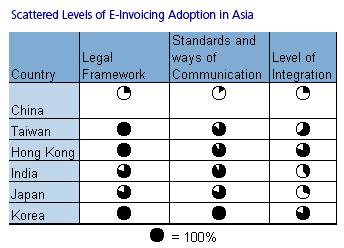Progress of Electronic Invoicing in Asia
Abstract
Electronic invoicing speeds up payments and reconciliation processes, while automating manual operations helps achieve efficiency results.
In a new report, Progress of Electronic Invoicing in Asia, Celent analyzes the evolution of electronic invoicing in Asia and its adoption rate among different Asian countries. In the region, attention and investments are more focused on “paperless trade” (i.e., the dematerialization of trade documents). One reason for the low adoption rate of e-invoices is the not yet complete integration of the procure-to-pay and order-to-cash corporate processes.

“The quest for integration is closely linked to companies’ level of sensitivity to the offer of integrated banking services for cash and trade,” says Arin Ray, Celent Analyst and coauthor of the report.
“Asian companies have a substantial lack of confidence when it comes to relying on banks as their technology partners,” adds Enrico Camerinelli, Senior Analyst with Celent’s Banking Group and coauthor of the report.
This report provides an overview of the market in terms of trends and volumes, focusing on intercompany (business-to-business) invoicing practices as well as public sector (business-to-government) practices. The report pays particular attention to technology standards adopted for exchanging messages for electronic invoices and also for payments and commercial services. A detailed analysis of the adoption of digital signatures and other means of security is also provided. The report then reviews currently adopted technologies and business models.

